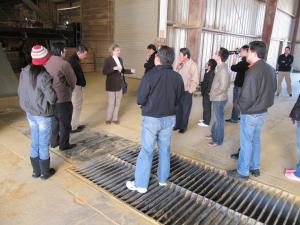One of the largest animal feed manufacturers in Indonesia found Export Exchange 2012 and an accompanying trade mission organized by the U.S. Grains Council beneficial for his business and a great source of contacts for future U.S. purchases.
“We had an eye opening tour,” said Arief Widjaja of Japfa Comfeed in Indonesia. Widjaja was part of a team from Indonesia and Southeast Asia that visited a farm to learn how feed grains are produced and handled before moving through a transloading facility and export terminal.
“It is very beneficial to understand that (process),” he said. “It gives us a feeling of security that we know how the product is being produced, treated and transferred to us.”
Japfa Comfeed produces more than 2.5 million tons of feed per year, with a significant portion of that being poultry feed, although the company also produces feed for aquaculture, dairy and beef producers.
Widjaja was one of more than 200 international buyers at Export Exchange 2012. He was hosted in the United States by the U.S. Grains Council, with USDA funding assistance leveraged by the Council through public-private partnerships such as the Foreign Market Development (FMD) and Market Access Program (MAP). FMD and MAP are part of the Farm Bill and help develop, maintain and expand long-term export markets for U.S. agricultural products.
Once Export Exchange began in Minneapolis, Minn., Widjaja said he was able to make contact and explore opportunity with several U.S. feed ingredient suppliers. “The U.S. Grains Council is helping us a lot to identify good, reputable suppliers,” he said. With nearly 300 U.S. suppliers and other agribusinesses present at Export Exchange, he was able to discuss opportunities for new business with several potential new suppliers as well as exchange information with suppliers he already knew.
“A few years back when DDGS emerged as a major ingredient in feed rations, the U.S. Grains Council came forward very quickly to help us with data, market research and how to use that product,” he said. “Now that the product is slowly changing, with low-oil DDGS becoming available, the U.S. Grains Council has come forward again with research to help us understand the product and how to use it better for our formulations.”

